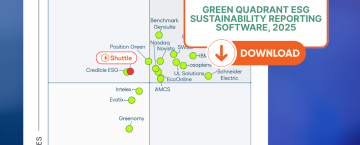Pillar 2: Simplify the management of MOCEs, JVs and POPEs for an optimal Effective Tax Rate
Introduction
Pillar 2 of international tax regulations introduces complex new requirements for companies, particularly in terms of calculating the Effective Tax Rate (ETR).
These regulations, introduced by the OECD, are based on concepts such as blending, minority-owned constituent entities (MOCE) and sub-groups.
These sometimes confusing concepts call for a clear, appropriate methodology to ensure compliance and optimize tax management.
Pillar 2 challenges: grouping entities & distinctions
Pillar 2 is based on a precise structuring of the entities to be included in Effective Tax Rate (ETR) calculations.
It is based on entity categories that are superimposed on existing regulatory perimeters, such as IFRS 10 financial consolidation and CbCR reporting.
💡 Key distinction: The consolidation perimeter and the CbCR perimeter are regulatory frameworks that determine which entities must be reported.
For Pillar 2, on the other hand, it’s no longer just a question of reporting, but of tax calculation, which requires a different grouping of entities.
Thus, under Pillar 2, entities are classified into three main categories:
1️⃣ Controlled Entities
They correspond to entities that are consolidated or that would be consolidated under IFRS 10 if they were included in the scope of consolidation.
- Blending: Constituent entities are grouped by jurisdiction for the purpose of calculating TEI.
- MOCE (Minority-Owned Constituent Entities): These entities, less than 30%-owned, are calculated individually, unless they are part of a MOCE sub-group.
2️⃣ Non-controlled entities (Joint Ventures)
These are entities in which theultimate parent entity (EMU) holds more than a 50% economic interest, but which are not controlled within the meaning of IFRS 10.
🔹 These entities are not consolidated, but must be treated separately when calculating the TEI under Pillar 2.
3️⃣ Investment entities
They receive special treatment under Pillar 2 and are excluded from the scope of the CbCR.
💡 Why this distinction?
- The scope of consolidation is mainly used for financial reporting purposes.
- The CbCR scope is used for country-by-country reporting of tax and economic data.
- The purpose of the Pillar 2 scope is to ensure a minimum worldwide tax rate. It therefore applies entity-specific grouping rules, independently of accounting consolidation logic.
👉 In summary: Pillar 2 does not use exactly the same perimeters as consolidation or CbCR. It reclassifies entities according to their structure and level of control, in order to calculate the TEI correctly.
Methodology for calculating TEI
Replacing vague notions
One of the major challenges of the OECD texts is the use of terms that are familiar in consolidation, but with different meanings. For example, the term “sub-group” can be replaced by “TEI calculation category” for greater clarity.
Calculation categories
Thus, the calculation of the TEI is based on three main categories:
- Blending: Data is grouped by jurisdiction.
- MOCE (minority-owned entities): Calculations are made separately.
- POPE (Partially-Owned Parent Entities): These intermediate sub-groups are not included in the calculations, but are taken into account when paying tax.
Calculation examples by Jurisdiction (watch episode n°2 in replay)
The Advantage of Digital Solutions
The complex calculations involved in Pillar 2 require special tools. Our solution GMT Insight offer :
- Complete automation of TEI calculations.
- Guaranteed compliance with OECD rules.
- Simplified data management for each jurisdiction and each calculation category.
Conclusion
Pillar 2 regulations require companies to master the concepts of blending, MOCE and POPE. Tools such as GMT Insight make it possible to simplify these complex calculations, while ensuring compliance and optimizing tax processes.
💡 Discover how GMT Insight can transform your tax management and ensure Pillar 2 compliance.
*MOS stands for “Minority-Owned Subsidiary” or “Minority-Owned Constituent Entity”, while MOCE is a contextual variant often used to designate the same concept, but with a terminological simplification.


